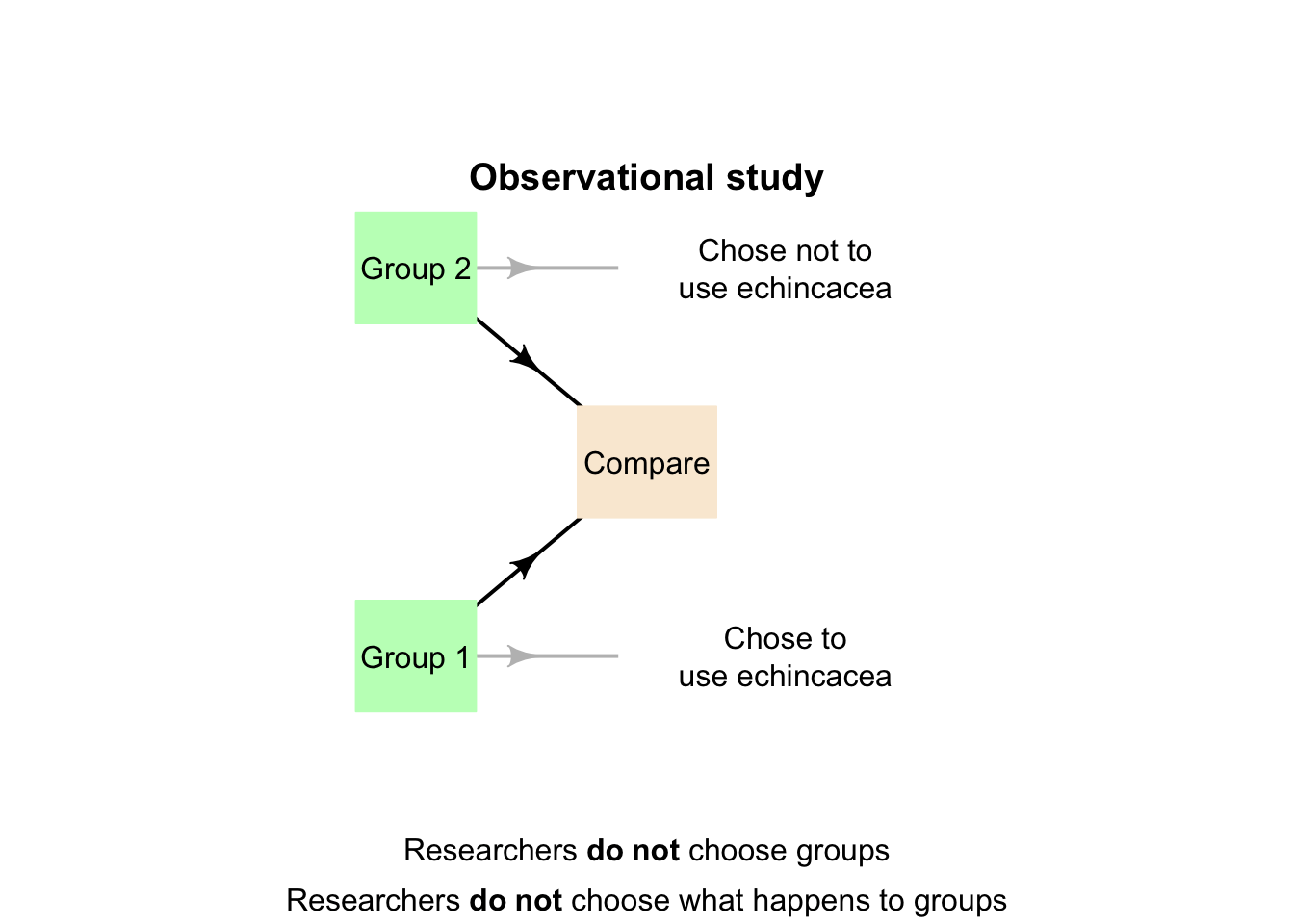3.5 Comparing study designs
In experimental studies, researchers create differences in the explanatory variable through allocation, and note the effect of this on the response variable. In observational studies, researchers observe differences in the explanatory variable, and note the values in the response variable. Different RQs require different study designs (Table 3.3).
| RQ type | P | O | C | I | Study type |
|---|---|---|---|---|---|
| Descriptive | Yes | Yes | Descriptive | ||
| Relational | Yes | Yes | Yes | Observational | |
| Interventional | Yes | Yes | Yes | Yes | Experimental |
Importantly, only well-designed true experiments can show cause-and-effect. Well-designed true experiments provide stronger evidence than quasi-experiments, which produce stronger evidence than observational studies.
However, experimental studies are often not possible for ethical, financial, practical or logistical reasons. The animation below compares observational, quasi-experimental and true experimental designs.
Well-designed quasi-experiments and observational studies can still produce strong conclusions, but cannot be used by themselves to establish cause-and-effect conclusions.

FIGURE 3.7: The three main study designs